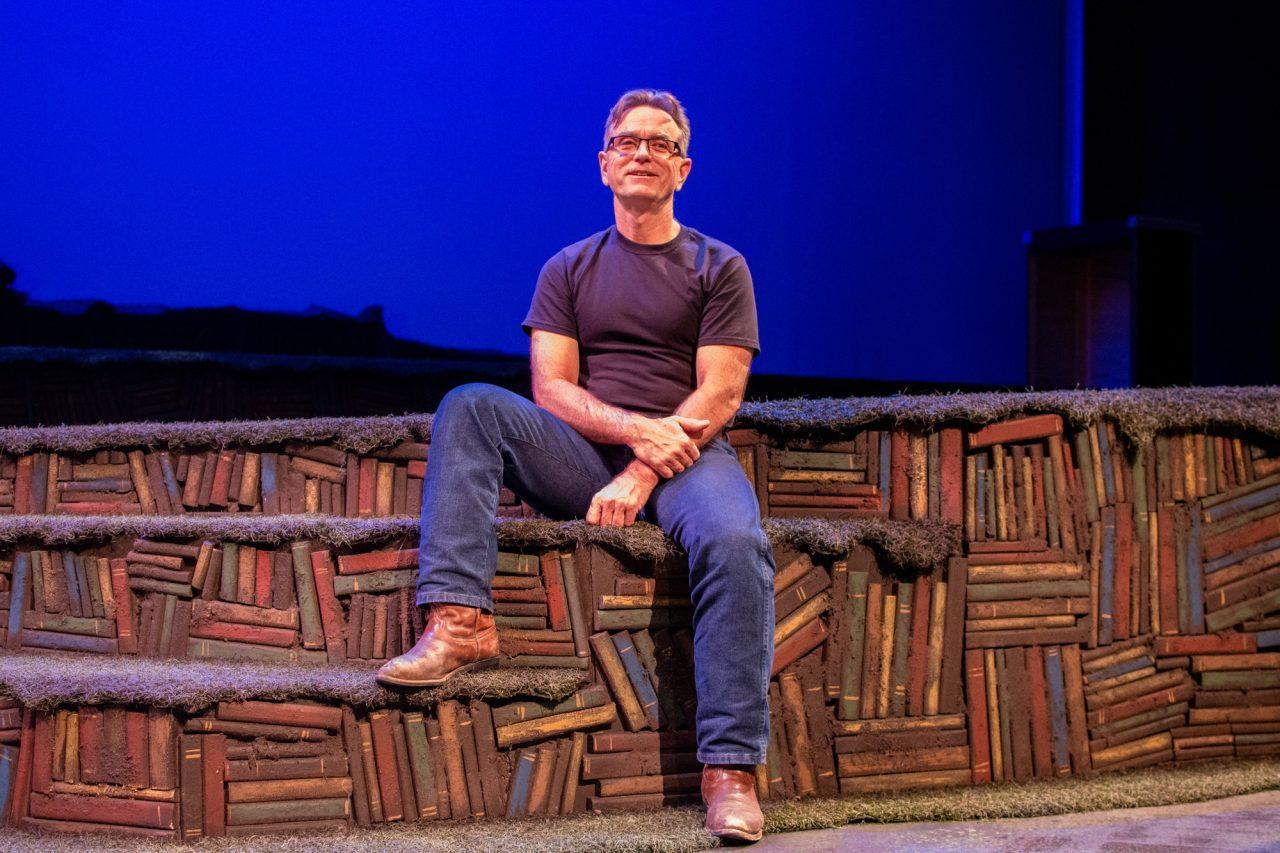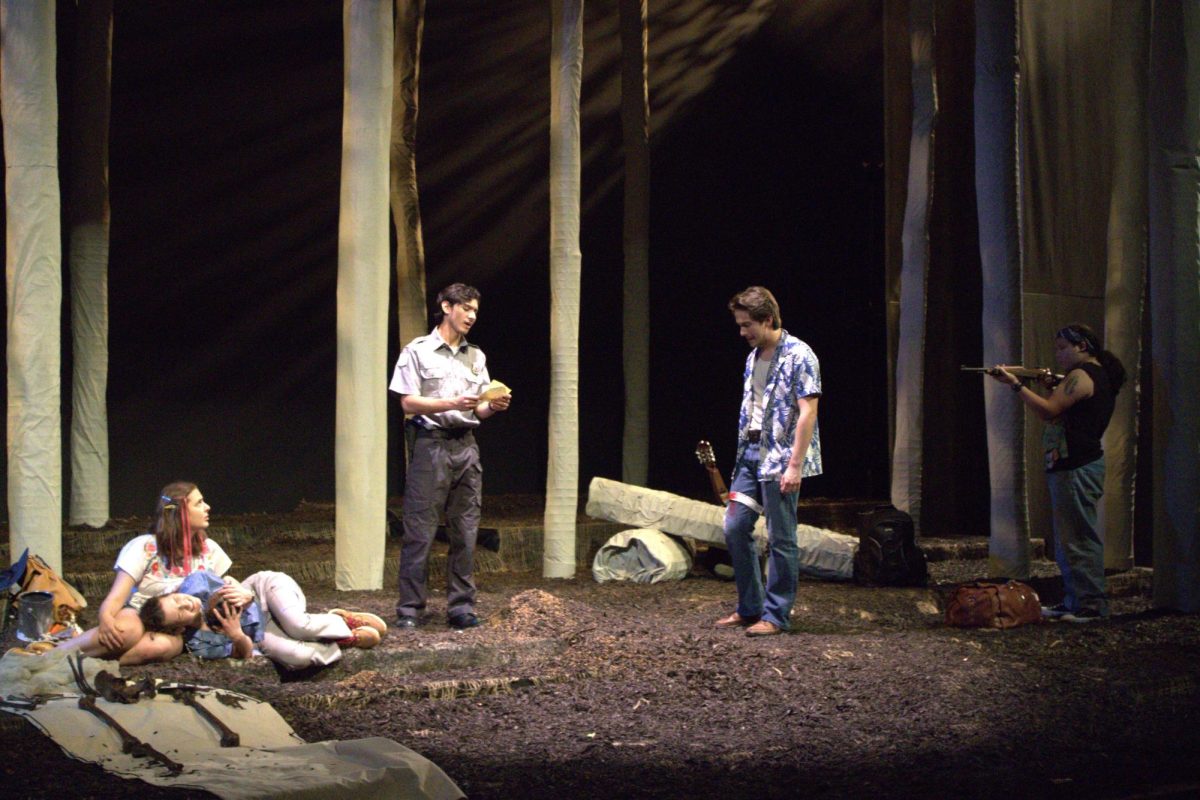Photo by Genevieve Humphreys
From full-scale productions like last year’s “Into the Woods” and this year’s “You on the Moors Now” to smaller, intimate performances like “The Men’s Project” and “Tick, Tick … Boom!,” many of us are delighted with the final, polished products of Trinity’s Department of Human Communication and Theatre. That said, there is little appreciation for the sheer amount of time and effort required to see a major production through.
From conception to premiere, the average mainstage show at Trinity takes three months to come together. In three short months, a small team of students and faculty must build the entire set, props and costumes. In almost every case, each show is built from scratch.
If anyone understands the necessary effort to make theatre happen at Trinity, it’s Tim Francis. Francis is the Department of Theatre’s lighting designer and technical director, and he’s played an instrumental role in producing over 100 shows at Trinity since becoming a faculty member in 1990.
In addition to teaching several theatre classes, Francis oversees the scenic design studio, the proverbial “room where it happens.” Here, students — some of whom have never held a power tool — learn scene construction hands-on. In any given semester, student workers log hundreds of hours sawing wood, welding metal and hanging lights to bring theatre from the realm of imagination to reality.
Beyond Trinity, Francis designs lights for the broader San Antonio theatre community. Notably, he collaborates annually with Ballet San Antonio, designing lights for their recurring production of “The Nutcracker.” Recently, Francis and Trinity costume designer Jodi Karjala received the Jasmina Wellinghoff Award for their commitment to San Antonio’s theatre community.
Though he’s been in the business for decades now, Francis didn’t find theatre until later in life.
“When I graduated high school, I had no plan for the rest of my life,” Francis said. In college, Francis enrolled in an acting class and, after enjoying it, enrolled in more theatre classes.
“Pretty early on I walked into the scene shop,” Francis said. “And the story goes that I picked up a hammer the correct way and the guy who ran the shop said, ‘You want to work with me?’ and that really launched my career.”
Francis filled nearly every role in theatre production during college but eventually decided to focus on lighting design.
“The goal for lighting design is to support the story,” Francis said. “My old lighting design instructor said that lighting is like visual glue: it’s the job of the lighting designer to help hold the show together visually.”
While there are a handful of students who work directly under Francis in the scenic design studio, most know him for his Production Techniques and Principles of Stage Lighting classes.
Francis is a dynamic professor with an appreciation for hands-on learning.
“I try to demystify the concept of lighting by getting students to look around at the light in their lives every day and think about what it means and how it impacts us,” Francis said.
Kody Nace, a senior, had his first meaningful interaction with Francis when he enrolled the Principles of Stage Lighting class.
“One thing I love about Tim is that he really encourages people to figure things out for themselves,” Nace said, “If you’re working on something and ask a question, he’ll respond, ‘Well, what do you think?’ It gets the person thinking about if they can solve the problem. If he knows you know something, he’ll expect you to put it into action.”
Junior Sarah Bastos has worked with Francis in the scenic design studio since she was a first-year student. Prior to her first year, she had little experience with scene design.
“I remember meeting Tim in his office and saying, ‘I don’t know anything about this at all,’ ” Bastos said.
On the first day of work, Francis handed Bastos a drill and instructed her to build wooden frames. Since then, Bastos has learned more than she ever imagined.
“He’s been in the business doing things for a very long time,” Bastos said. “He’s taught enough so that he knows how to work with people who’ve never used power tools. He just kind of throws you into the deep end even if you think you can’t do it because he knows you can.”
Junior Ericka Sosso also works in the scenic design studio. When she decided she wanted to learn to weld, Francis was there to support in every way possible.
“We asked him about it and he told us to watch some videos and helped us learn it when we came into work,” Sosso said. Francis even supported Sosso and another prospective welding student after shop hours.
“I feel like people outside of the theatre department don’t know how much work he does,” Nace said.
In gathering interviews for this story, every source stressed Francis’s importance to the department. His intimidating exterior hiding a soft heart, dry wit and an eclectic taste in music embodies the best values of the Theatre Department. Nace put these sentiments into words.
“He brings so much to the theatre, and without him, I don’t know what this department would be,” Nace said.
You can see the work of Francis’s lighting design students in Momentum this Friday and Saturday at 7 p.m. Other work that featured Francis’s stage construction and lightwork this semester includes the mainstage theatrical shows “The Wolves” and “You on the Moors Now.”







